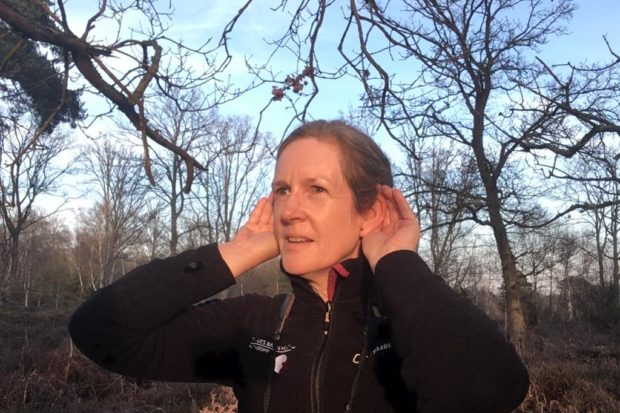New technology

We recently published the latest results of our annual bird survey, commissioned to estimate how many pairs of birds are nesting on the heaths. We’re particularly interested in counting ground-nesting nightjars, Dartford warblers and woodlark, but count other vulnerable species too. As you can imagine, it’s a huge task to cover all 8,000 or so hectares, across three counties, requiring an army of volunteers coordinated by our partners at 2Js Ecology.
An ear to the ground
The main tool used in the survey is our ears! We listen for birds singing. Because only the male birds sing, one singing bird = one territory = one pair. Not all of the heaths are accessible on foot though, so wouldn’t it be great if we could plant listening devices that would count how many birds are singing?
That’s just what Baker Consultants and Natural England thought in 2018 when they tested a new technology called “bioacoustics”. The first project of its kind in Europe, and one of only a handful of studies globally, Baker Consultants used automated units to record birds at 44 heaths within the Thames Basin Heaths and Wealden Heaths Special Protection Areas.
Award
They won an award for their work in January, the prestigious Best Practice Award for Innovation at the annual Chartered Institute of Ecology and Environmental Management (CIEEM) Annual Awards. Their results were impressive and are already leading to further research and innovative applications.
Our volunteers are certainly not out of business, not by a long chalk. But watch this space, perhaps new technologies will have a part to play in protecting our heaths one day in the future.
Sarah
Thames Basin Heaths Partnership
